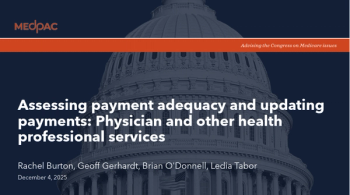
6 ways to prepare staff for value-based reimbursement
Value-based patient care requires the support of an entire practice team, so make sure they understand the new rules of the game.
Whether physicians like it or not, value-based reimbursement is here and everyone wants to play to win.
Here's how to get medical staff-including physicians-on board with the rules and metrics of the game, according to American Medical Association (AMA) President
1. Accept the facts.
Physicians can run but they can't hide from value-based reimbursement and in general, it really is the right thing to do. Honestly, up to now, Medicare’s pay-for-performance programs just haven't seemed relevant, practical or easy for physicians and staff to participate in, according to Barbe. That's turned a lot of healthcare professionals against such programs in general, but Barbe says the AMA is excited about the potential of the Medicare Access and CHIP Reauthorization Act (MACRA) and the Quality Payment Program (QPP). Both provide the organization with a framework for a more rational approach to value-based reimbursement.
2. Acknowledge that "It's time."
A recent AMA
3. Take it slow.
Physicians can get in at a very low level of participation this year and avoid a penalty in 2019. The “Pick Your Pace” feature allows them to report on one measure, for one patient, one time, with no penalty. For example, maybe it's just not a good business decision to invest in technology to streamline data collection now, maybe a physician is at the end of their career or maybe they are rural and have low Medicare volume.
4. Do your own thing.
Pick a quality measure that makes sense for the practice. If the physician and staff are more interested in managing people with diabetes, pick that. Or maybe they want to do an improvement activity and have already been thinking about having extended hours into the evening or weekend and staff is on board. So that makes sense to the physician and is relevant to patients' needs.
This change may not result in an upside bonus payment in the first year, but can help get into the positive performance payment mode and help avoid a penalty. That gives everyone experience with that part of the program and helps them get comfortable.
Remember that it's not necessary to take on the whole program at once.
5. Use free resources for help.
Even if the physician is not a member, staff can use the AMA's resources to learn more about
6. Join the club.
The Centers for Medicare & Medicaid Services really are on physicians’ side, and that's been gratifying, Barbe says. Even if the physician and employees come reluctantly, remember, this is all about helping physicians increase the quality of care available for patients by rewarding them for providing previously non-billable services.
Take advantage of opportunities for financial reimbursement to build the necessary resources for value-based reimbursement into the practice. These are not going to come through fee-for-service.
Newsletter
Stay informed and empowered with Medical Economics enewsletter, delivering expert insights, financial strategies, practice management tips and technology trends — tailored for today’s physicians.















